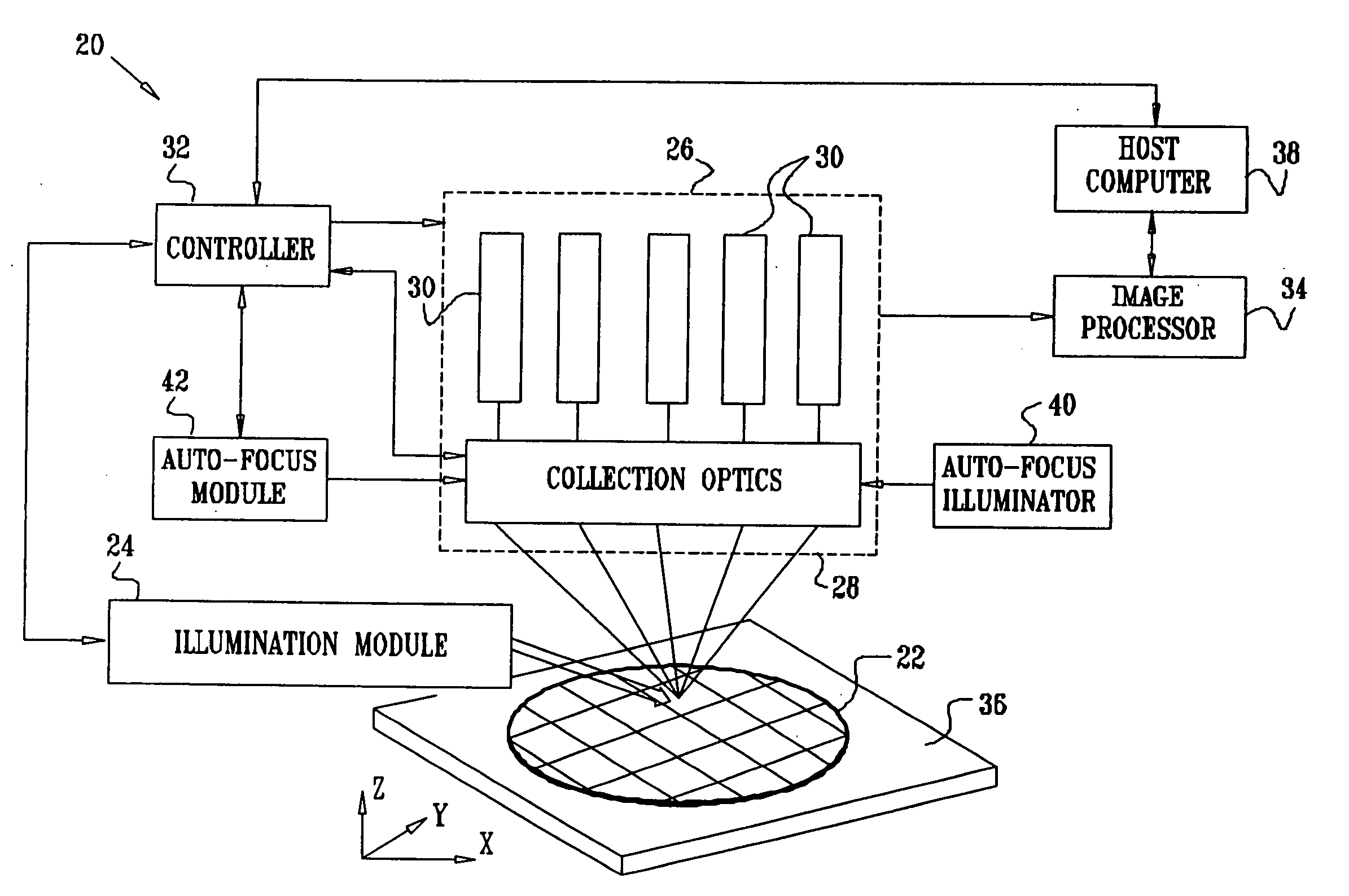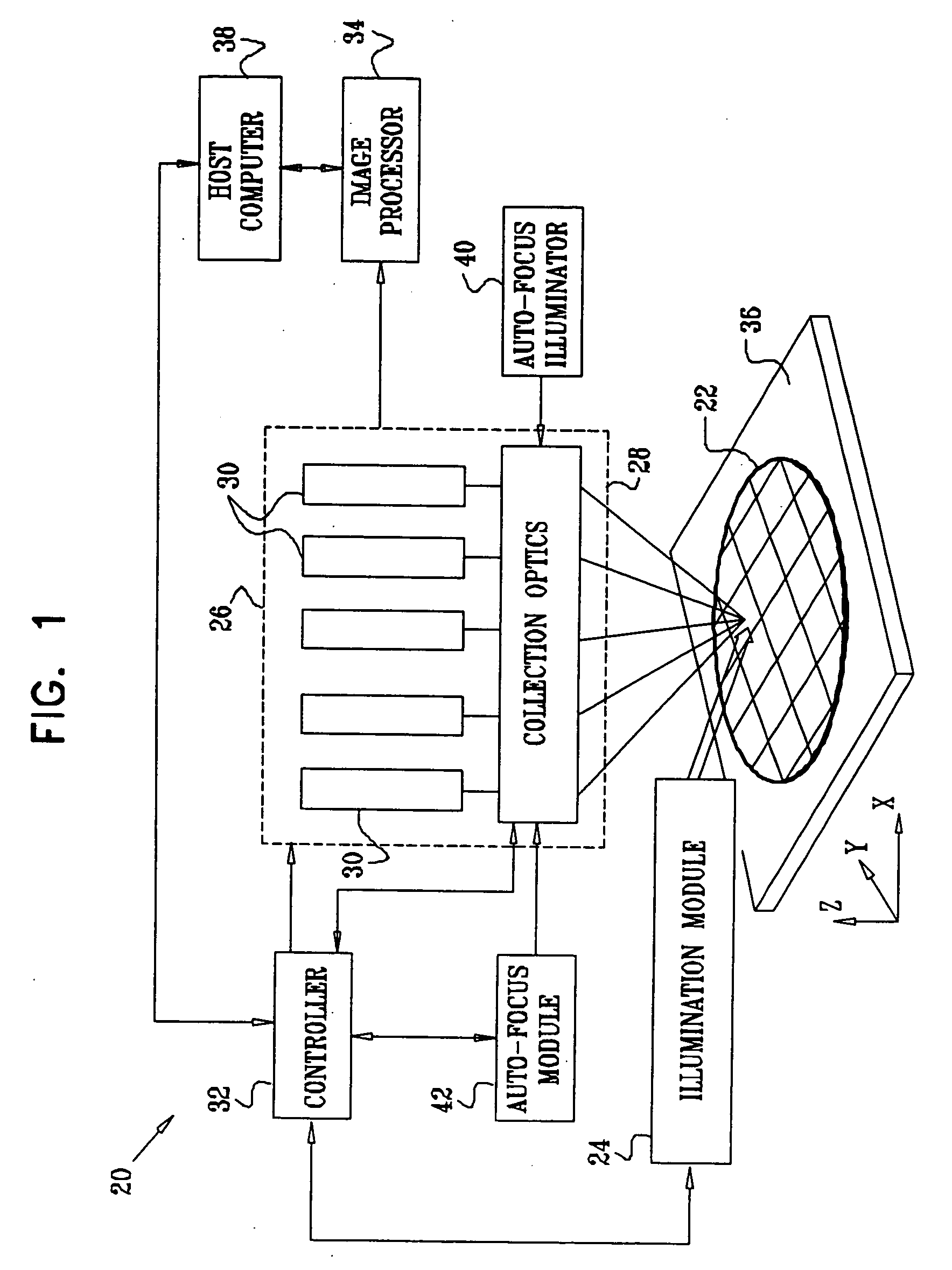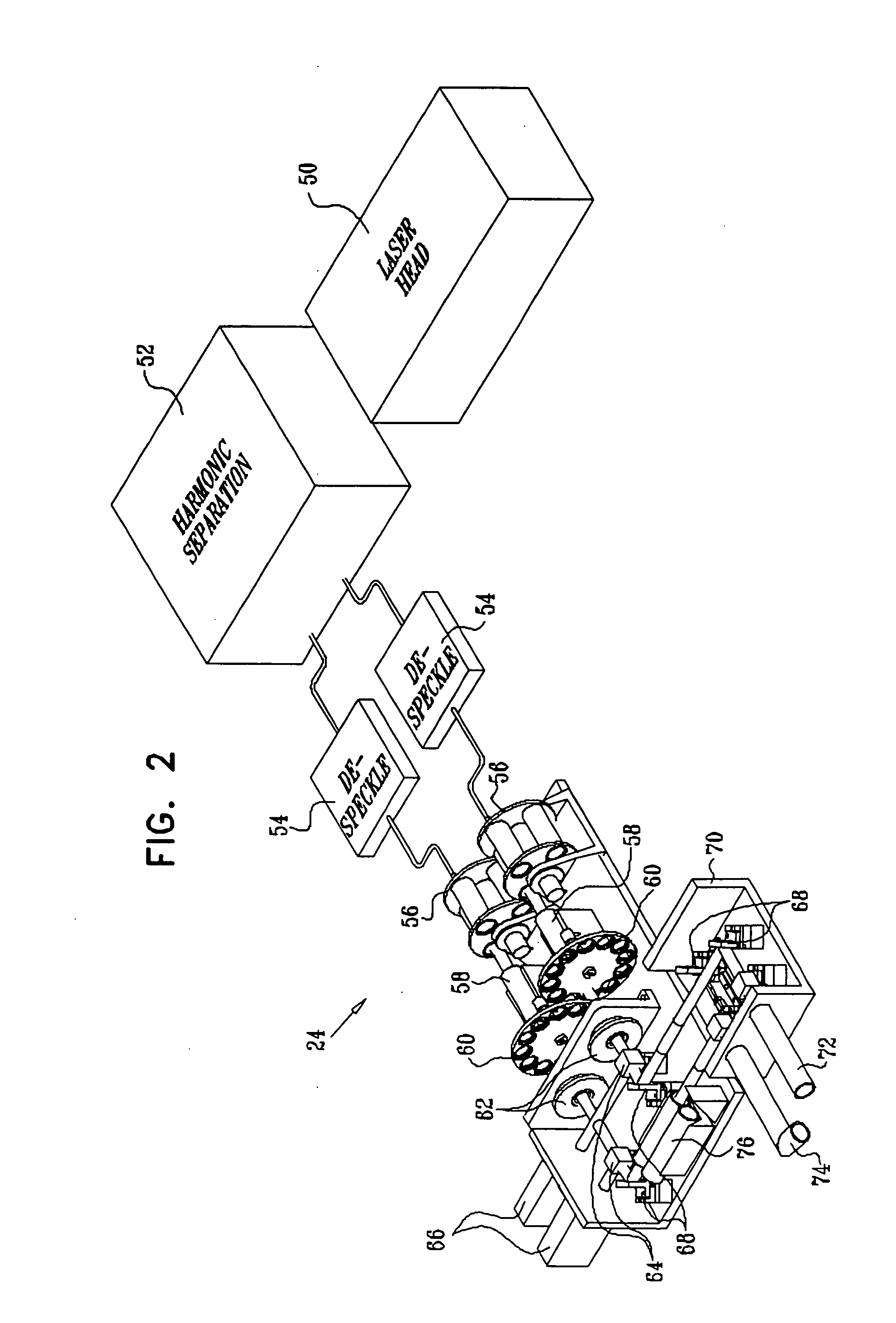Inspection system with oblique viewing angle
- Summary
- Abstract
- Description
- Claims
- Application Information
AI Technical Summary
Benefits of technology
Problems solved by technology
Method used
Image
Examples
Embodiment Construction
[0036]FIG. 1 is a block diagram that schematically illustrates a system 20 for optical inspection of a semiconductor wafer 22, in accordance with an embodiment of the present invention. Typically, wafer 22 is patterned, using methods of semiconductor device production known in the art, and system 20 applies dark-field optical techniques to detect defects on the surface of the wafer. Alternatively, however, the principles embodied in system 20 may be applied to unpatterned wafers and to inspection of other types of samples and surfaces, as well, such as masks and reticles. Furthermore, although system 20 is dedicated to dark-field inspection, aspects of the present invention may also be applied in bright-field inspection, as well as in other areas of illumination, inspection and imaging.
[0037] System 20 comprises an illumination module 24, which illuminates the surface of sample 22 using pulsed laser radiation. Typically, module 24 is able to emit the laser radiation selectably at t...
PUM
 Login to View More
Login to View More Abstract
Description
Claims
Application Information
 Login to View More
Login to View More - R&D
- Intellectual Property
- Life Sciences
- Materials
- Tech Scout
- Unparalleled Data Quality
- Higher Quality Content
- 60% Fewer Hallucinations
Browse by: Latest US Patents, China's latest patents, Technical Efficacy Thesaurus, Application Domain, Technology Topic, Popular Technical Reports.
© 2025 PatSnap. All rights reserved.Legal|Privacy policy|Modern Slavery Act Transparency Statement|Sitemap|About US| Contact US: help@patsnap.com



